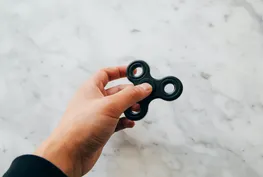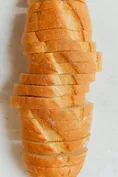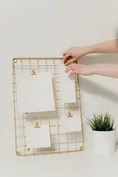What is a 3d printer and how does it work
A 3d printer is a printer that can print with an extruder in 3d rather than just 2d. So

complex, impossible to machine structures can be created. Most use some form of plastic, biodegradable or not. They print in layers with a file created from a slicer.
Image being able to print an item in 3d….
Imagine printing off a toy truck for your child…a fidget spinner….a unique miniature for gaming….
You see the 3d image on the screen and a while later you actually have it in your hand…amazing…
But let’s find out what it is that can produce this and how it works….
What is a 3d printer
Using an extruder – just a fancy name for a piece of kit that pushes out a fixed diameter

material, normally plastic in the case of 3d printers, this printer will follow a pattern, layer by layer until if completes the printing of a 3d model….
If you want another way of looking at how it does it then think of a ream of paper…and on each sheet you draw one slice of your model…
So now stacking them on top of each other it becomes not 2d but 3d ….and make it out of thicker paper and you have a 3d model…
And it is only the parts you want ( other than supported structures) that you print so minimal waste…
So you need to control accurately the positioning of the nozzle and also when and how much material comes out…
For this you will need X,Y and Z axis control, along with extruder control…
But the material is a thermoplastic.. .so needs heating to make it more fluid to allow it to flow….
And where it is being printed needs to be warmed to allow the material to stick to it…
What is the M.E.S.H.
So really you have a complex machine …
That all the parts have to work together and carry on working for hours on end…
Unlike the old printer days where you may print say 100 sheets and it takes a few minutes, a 3d print may take days- yep days…

Depending on the resolution of the layer height, size of model and speed of machine…and speed that you can print the material…
So what is M.E.S.H. – this stands for the four major parts of a 3d printer…
The Mechanical, the Electrical, the Software and the Heating…
Let’s have a quick dive into each of these sections of the printer…
The Mechanical parts
These are the leadscrews, guide rails, frame, bracing, screws, nuts and bolts….
Everything not covered by the electrical system…
All are critical to the operation of the printer and screws, huts and bolts must be periodically checked wit the stresses and strains placed on them by the bed movement and print head movement…
The leadscrews are connected via couplers to the motors, so you can have a slight misalignment and it not affect the performance of the printer…
The frame holds the print head rigid and allows it to move with pecision and speed over the print bed….
Without this rigidity you will get imprecise models, shimmeying outer surfaces as the printhead comes to a stop but the frame keeps on moving…
The guide rails must be straight or the models may have imperfections or bowing in them….
The belts driving the bed and print head must be flexible, but not stretchy…as stretchy will allow the bed and printhead to carry on moving after the motors have signalled for them to stop…
There needs to be tension on the belts, but not too much as to prematurely wear out the bearings on the motor shafts…
And talking of motors…
The Electrical parts
The stepper motors must be durable and able to position the print head and bed where it is needed for the filament to be printed…
The motors are driven from the main board…
The wiring must be flexible enough to cope with numerous flexes…
And the main board covers the control of the mechanical system…
The connectors have been selected to make connections easy and take the load without issue…
The power supply must be of large enough capacity to cope with the loading of the printer…
All the motors ( x,y, z and extruder) may all be moving at once…
And don’t forget the stopping devices…these must be in the right place and secure…
Along with the heating of the hot end and bed being topped up with heat….
There must be a mains switch…just in case everything goes wrong…just in case…
The interface to take in the model must be robust enough to withstand the multiple insertions of either usb cable or sd card with out failing…
And the user interface must be clear enough and easy to read in most light levels…
And talking of the controller board there is something inside that must be right….
The Software
The hidden detail in a lot of things, the bit that can take longer than all the rest to complete….
And must be right or everyone complains…
The software that controls everything…
From the motors to the heaters to the extrusion to the display…
And reading the files correctly and interpreting them…
Saving the auto level data to correct for imperfections in the bed surface…
The thousands of lines of code all hidden from site, just the words on the display giving it away…
And the song of the printer as it glides the printhead, depositing plastic as it continues reading through the file….
And talking of the filament being extruded…the last part of the 3d printer ….
Getting the software updated for any bugs can be difficult or adding modifications causes issues due t othe siz of the software being too large for the memory…
The Heating
To force the filament out of the nozzle we need to heat it up so it goes liquid, but not too much or it just runs out when it feels like it…
Getting the heat into the hotend and monitoring it over the hours it takes to print your model is no mean feat…
But the filament goes above the plastic temperature as the hotend needs to have that excess heat in it to allow for the proper flow of plastic…
The thermistor feedback must be correct or the temperature will be out…
As the extruder starts to push the plastic, it fills the nozzle back up and forms its plug in the thermal break to increase the pressure on the plastic coming out of the nozzle…
The power supply must be able to cope with the demands of the heater and the control software turn on the heater control at the right time…
The print bed needs to be warmed to allow the filament to stick to it…
Again a mass to heat up and control, this time a lot more current…
The wiring to the bed warms slightly as the current flows and the resistance of the connector allows it to discolor slightly as the temperature rises still more…
So all of these systems must be correct before….
Putting it all together
The only way you get your model printed correctly is by all of these systems working together over the whole of the time it is printing…
Without one part of them then the print will fail…
The motor drive not being sufficient and allowing the print head to overrun by a few steps on this layer and the next and next…
If the feedback from the hotend fails then the filament stops coming out and depending on how the software is written then the model may finish without any plastic being deposited….
There are hundreds of scenarios that could cause your model not to be printed….
But with the reliability and endurance of even the cheaper 3d printers improving then the chances are that you will get your prints that you want…
Albeit with a few tweaks in the slicer software…
They are fantastic pieces of machinery if you start to look at them…even when they go wrong and the model doesn’t stick to the bed and you are ready to hurl it out of the window….
The work, the systems the mechanics that goes into them and most of us take them for granted…
There will be a few posts that go into detail on each of the parts of the M.E.S.H. detailing how it works in detail and some faults that can be easily rectified…
Let me know in the comments if there is something specific you want to know about and i will see if i can include it …
Thanks for reading
Happy printing….
